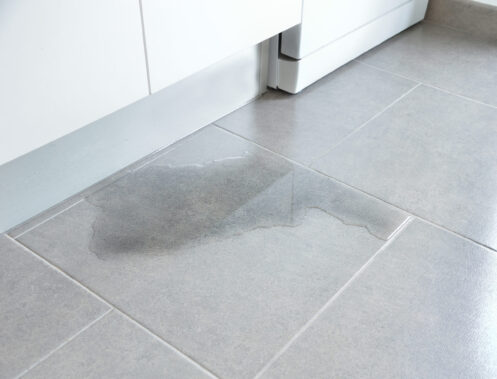Leaks are common problems that every homeowner wants to avoid. Even a small leak can drive up your water bill and, worse, result in substantial water damage. If you suspect you have a leak, you should call a professional plumber as soon as possible. The pros know exactly how to determine if you have a leak and, if so, pinpoint it. With that in mind, let’s explore some of the equipment and techniques that they may employ.
Check Your Leak Detector
If you have a smart leak detection system in your home, it has likely already sent you an alert. Traditional leak detectors may sound an alarm instead. You can also check its display for an active fault. Leak detectors work by measuring either water motion or sound. Whether your system can pinpoint a leak depends on how sophisticated it is. Many units will simply alert you that there is a leak inside the home. You can then turn off the water main and call a plumber. If you have acoustic sensors installed outside the pipes, they can help your plumber zero in on exactly where the leak is.
Plumbing Electronic Sound Tests
If you do not have acoustic sensors, your plumber may perform an electronic sound test to locate the leak. There are handheld acoustic leak detectors available at local home improvement stores. Professional plumbers use a more advanced system with a microphone and headphones. The plumber will walk through the home and continue moving toward the source of the noise until finding the leak.
Note that the sound comes from the moving water and not the pipe itself. That said, the type of pipe does lend itself to more or less noise. Leaks tend to be louder with metal pipes. With PVC, CPVC and PEX, the sound can be lower. In some cases, with plastic pipes, a sound test may not be possible, and your plumber will have to use another approach.
Water Pressure Test
Another way you can detect a leak and at least isolate it to inside the home is a water pressure test. Turn off all faucets in the home in addition to showerheads, washing machines, dishwashers, ice makers and so forth. Attach your water pressure tester to the outside faucet or hose bib closest to the water meter. Tighten the gauge by hand. Open the faucet. For most homes, the optimal range is between 45 and 55 psi. If the reading is below 40 psi, you likely have a leak. You can now use a sound test or some of the other techniques to find it.
Monitor Your Water Meter
If you lack some of the equipment discussed thus far, you can use your water meter. Through this technique, you can determine if you have a leak. You can also determine whether the leak is inside or outside if your home connects to a municipal water line.
As with measuring pressure, turn off all faucets, appliances and so on. Check the water meter. Record the readings. Wait an hour and return. If the numbers have changed, you have a leak. Next, turn off the shutoff valve for your main water supply. Check the meter. Record the readings. Wait an hour and return. If the numbers have changed, the leak is occurring in the buried pipe that connects your plumbing to the city water line.
Shut Off the Water Main
At this point, shut off the water main and keep it off. Contact your local plumber if you haven’t already. In the case of a significant leak, you may want to contact your water company as well. Many water companies provide courtesy credit adjustments for leaks.
The readings from your water meter should give you an idea of how severe your leak is. If over the course of an hour, you have lost a half to 1 gallon, the issue is likely a faucet, toilet or appliance. If you are losing multiple gallons an hour, then you likely have a burst pipe.
Inspect Your Yard
If you’ve determined that the leak is outside, the next step is to check your property. If the leak is minor, it can take a while before there are any obvious indications. Potential signs homeowners often overlook are patches of grass that are greener or growing faster. If the leak is severe, then you may already have depressions in your lawn or even large patches that are soggy or pooling.
Look for Ceiling, Wall and Floor Abnormalities
If the leak is indoors and substantial, you should look for potential signs of damage as you wait for your plumber to arrive. As you work your way from room to room, look at the ceilings, then walls and finally floors for any signs of water damage. If you find any, you can at least move possessions out of the affected area. Check all levels of your home, including the basement if applicable. If you didn’t do any acoustic detection earlier, you may want to put your ear to the walls to see if you hear anything. You’ve shut off the water main, but that won’t immediately stop the leak. There is still water in the system.
Check Faucets
If the leak is inside and small, faucets are often the culprits. They generally result in small leaks, but small leaks add up. Leaks from the spout or base are usual, but you’d likely have noticed those. For each faucet in your home, look underneath the cabinet to ensure there aren’t any signs of water or water damage. If there is water, dry the area out. If there is still a drip or leak, use a bucket to contain it. It’s also a good idea to direct a fan into the area to help dry out any excess water faster. Even a slow faucet drip has the potential to run up your monthly water bills, so it’s important to be vigilant.
Check Toilets
If your faucets all check out, then your toilets are the next likeliest culprits. Phantom flushing is a common problem. But you likely would have heard it unless it’s a guest bathroom that goes unused. In each bathroom, check the tank. Look for signs of water around the base. With the lid still off, test the handle. Then, flush to determine whether the flapper and other components are working well. If you’re unsure, you can use the food coloring test. Put a few drops in the tank. Avoid using the toilet for about 30 minutes. Check the bowl. If you can see the food coloring, the flapper is bad.
Leak Detection in Magic and Treasure Valley
[company_name] has more than a decade of experience helping area homeowners find and fix leaks. Our plumbers also clean drains, repair sewer lines, install water heaters and install sump pumps. Our HVAC technicians install, maintain and repair all manner of heating, cooling and indoor air quality technologies. We also have electricians who upgrade electrical panels and install lighting, generators and surge protection. Call us today to schedule an appointment or with any questions about our services.


